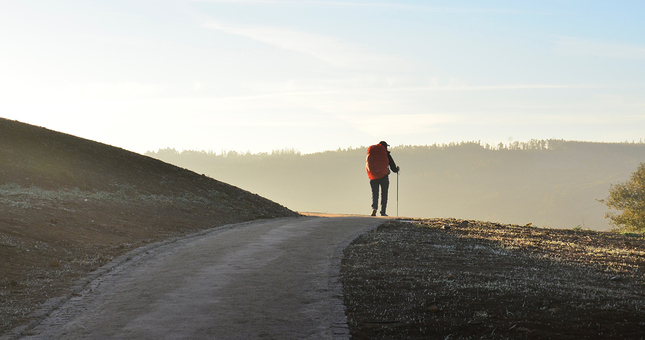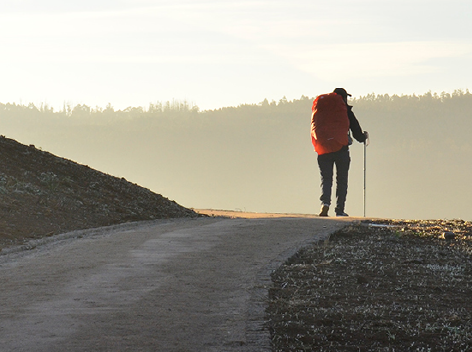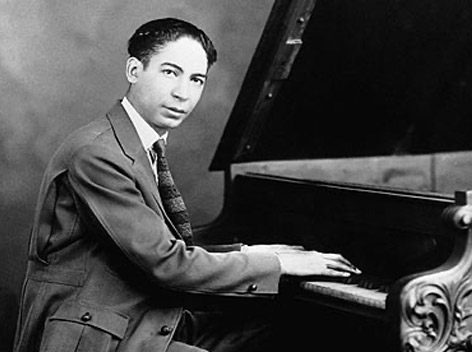
Our Bodies Bear Knowledge: Reflections from the Camino de Santiago
Whoever claims to abide in Him must walk as Jesus walked (1 John 2:6)
Much of what we see of Jesus’s life happens on the road while walking—teaching, healing, sharing meals, and encountering people from all stations of life. The apostle (in 1 John 2:6) instructs us to walk even as Jesus walked, though the text in English often is changed from the Greek walking words (periepatesen and peripatein) to live and lived. Living and walking offer sightlines into the experience of faith and ethical comportment, walking presenting an image that we register in our bodies.
This past summer my husband and I and some of our friends walked the Camino de Santiago in Spain, a thousand-year-old, nearly 500-mile Christian pilgrimage trail. Of course, Jesus never walked there, and it’s even likely that St. James, son of Zebedee and disciple of Jesus, never visited the cathedral city and pilgrimage destination that’s named after him. Nevertheless, Christians have walked the trail over the centuries with the hope of knowing God better or coming to know God in a new way. This ages-old spiritual practice is currently undergoing a revival. Are people eager to engage their faith in a more fully embodied way in our age of disengaged connectivity? I think so.
Spiritual Practices
For several decades I’ve been teaching people about practices, from the caring practices of the helping professions to spiritual disciplines that undergird our lives of discipleship. Most dictionaries focus on the repeated or customary action that constitutes a practice in our lives, like the practice of daily exercise. We use the phrase “to make a practice of” which conveys the intentionality with which we can commit to practices. Many of us are familiar with the resolution to take up daily exercise beginning on January 1, only to watch the practice and the intention ebb as the year progresses.
Theologians, including John Calvin, have struggled with the tension between old, calcified habits—indeed, “perverse practices”[i]—that can become the visible whited sepulchers of our faith, and the fresh devotion that is expressed through following Jesus in the “method which he has prescribed, the way of ‘discipline’ and ‘solid piety.’”[ii]
Contemporary philosophers and social scientists also have been concerned with the way practices can transmit the status quo through class-bred habits which serve to fortify social stratification, ethnic preferences, gender norms, and generational mores. We do things a certain way because that’s just how it’s done. Forks to the left, knives and spoons to the right. Shirts tucked in or left hanging over the trousers. Culture is transmitted, often unreflectively, through practices. You just know your “people” when you’re with them; conversely, you recognize the person who doesn’t seem to fit in.
Practices and social systems interpenetrate. We may unreflectively engage in a caring action which is culturally scripted—like giving up a seat on the bus to a pregnant woman—and suddenly discover a sense of generalized kindness flows through us. In this example, something that was a cultural habit became rich with human feeling once it was enacted.
The tension between empty practices and full ones is important to notice. However, in a secular worldview which excludes the possibility of a Deus ex machina intervention, it is difficult to imagine any human being completely stepping outside the enveloping culture in such a way that a fresh, vital practice could be born. Wouldn’t all practices have to be expressions of some aspect of the culture, even if in radical reaction against it? The culture would always be the soil of the practice.
For Christians too, who believe in God’s intervening grace, it’s important to be conscious of the ways our understandings and practices are culturally shaped. We seek to “follow the method which [Christ] has prescribed,” yet we do so as people socialized by and embedded in our cultures. Paul invites us “to walk in newness of life” (Romans 6:4).[iii] How do we continue to accept that invitation?
Pilgrimage: Walking in Newness of Life
Walking on pilgrimage is an intentional spiritual practice, though not necessarily a religious one for everyone who travels the trail. It’s a time apart from the systems and culture in which we’re ordinarily embedded, and a time entered into with the conscious hope of transformation. Without a doubt it’s an embodied practice, and our bodies have reactions to its rigors. Even as the walking cultivates sacred consciousness as the day stretches out, blistering feet demand to know why they’re being subjected to this ordeal. There’s a cost.
Beyond our internal debate about the costs and meaning of the journey, on a pilgrimage we’re embedded in the historical Communion of Saints who have traveled the same paths. We’re also surrounded by the contemporary communion of pilgrims who click along with their walking sticks and bouncing backpacks. We register the presence of fellow travelers, remembered and immediate.
With respect to the historic significance of pilgrimage, we’re people of a pilgrim tradition. Judaism, Christianity, and Islam contain pilgrim tales. Abraham, the common patriarch, was called out of Ur of the Chaldees to found a great nation. Moses led the Hebrew people on a forty-year pilgrimage to the Promised Land. The birth narratives of Jesus contain the journey to Bethlehem, the journey of the Magi, and the Holy Family’s exodus to Egypt. Islam is the only one of these three religions which understands pilgrimage as an obligation, but Christian pilgrimage is also a venerable and popular tradition.
In the Christian Scriptures, Hebrews 11:13 (in the King James and Douay-Rheims versions) tells us that saints who lived before us “were strangers and pilgrims on the earth,” a description also applied to the faithful by Peter in his first epistle (1 Peter 2:11). Being designated a “pilgrim” carried religious and political significance in the first and second centuries. Peregrinus, the Latin antecedent of “pilgrim,” means foreigner or exile, wanderer, one who travels or is migratory. During New Testament times, a peregrinus was a non-citizen subject in the Roman Empire, and peregrini constituted the vast majority of people who lived in the Roman provinces.
In our contemporary context, millions of people are choosing to be geographical pilgrims by traveling to sacred places. Pilgrimage today has become big business as people of faith and people of adventure flock to ancient pilgrim trails. The director of the Institute for Pilgrimage Studies at William and Mary College, George Greenia, claims that “Christian pilgrimage [specifically]…is experiencing almost convulsive growth across the world….”[iv]
On a geographical pilgrimage, walking in newness is experienced on a daily basis as one walks the trail not knowing what or who will be around the next bend in the road. Despite the routine of long days of walking, the landscape, weather, and community groups are different every day. But more than that, what God opens in one’s own soul changes: deepening and widening, perplexing and consoling, exposing and healing.
The newness sometimes feels raw and vulnerable, like unrequited, heartfelt hopes. Sometimes the newness is experienced as sheer delight and wonder, as fields and mountains shout out their beauty and God’s grace reverberates in souls. At other times the newness is heart-stretching, revealed in the company of pilgrims from other lands, traditions, and points of view.
Everyday Pilgrims
As Scripture makes clear, pilgrimage doesn’t need to involve foreign travel. Yes, there is blessing—as well as challenge—in being extracted from one’s surroundings and placing one’s foot on an ancient trail. And each one of us, in whatever location, is a pilgrim progressing more and more toward God. We hope to “walk as Jesus walked,” not necessarily in Galilee or wearing sandals.
That encouragement to walk as Jesus walked is what I’ve so appreciated about the ministry I’m part of in Berkeley, and it’s what I also experience and cherish at Regent College. The hope of all of us in coming to these places and engaging in their programs is that they help us along on our pilgrimages of following Christ more nearly. Newness of life is also encountered regularly in the small communities of pilgrims that gather for classes, retreats, and small groups at churches and also at schools. Sometimes the newness is cleansing and healing; sometimes it’s wondrous and immersive; and at other times it’s just challenging as our hearts and minds are stretched.
I’ve done some on-line teaching and know that there can be distinctive blessings in that modality, and during the current pandemic I’m discovering even more how community can form at a distance. All of New College Berkeley’s spiritual direction programs, for instance, moved a few weeks ago to the Zoom platform. Some of the directors and directees learned the modality for the first time. I led groups through the transition to stay-at-home contemplative gatherings.
Instead of making cups of tea and settling into chairs and sofas, we fiddled with our audio and video settings, making sure we were attuned to one another. As we became comfortable with screen encounters, we registered the blessing of observing each person’s home environment: art on walls, the lighted candle nearby, books lining shelves, and glimpses of hallways and windows. We were, amazingly, in each person’s home, encountering their embodied everyday life in a way very different the experience of being face-to-face, yet gift nonetheless.
I also greatly appreciate the embodied encounters in face-to-face environments. In a course at Regent College one summer I watched a seasoned pastor from Asia sitting next to a young teacher from South America. The pastor was a gentleman and somewhat formal in his way of being. He sat up straight in his chair, while she curled her legs under her. He was quiet, while she was exuberant and openly expressive of her feelings. At first, they seemed a bit uncomfortable sitting side-by-side. A few times during the class they were paired together for listening exercises, and I watched as they grew to appreciate one another. Over the course of the two weeks, they listened and laughed together, and before and after class spoke warmly in the halls and atrium of the College. Their proximity helped them notice grace in each other.
Those two students had different habits deriving from different cultures. They initially recoiled from the unfamiliarity. However, they both seek to follow Jesus and came together in that Way.
Our bodies bear knowledge. Sometimes, as in a quarantine, that embodied life is registered by voice only, as the person tells the story of his or her experience, and the listener hears nuances of hope and fear in the changing timbre of the voice. Sometimes there’s more sensory information, as on Zoom. The tear in the eye, the smile, and the tilt of the head, all noticed when face-to-face, are now beheld in the space that the person calls “home.” On the pilgrim trail, being physically there with other people makes all the difference in the world. You witness the sweat and blisters that signify the quiet walker’s devotion. You see tears when a pilgrim lights a candle. God’s grace flows through all modalities through which we come together in soulful community. Each modality carries a different blessing.
The Communion of Saints
We walk the pilgrim trail as individuals, yet we walk in the footsteps of and often alongside other pilgrims, all of whom are intending to walk as Jesus walked. Each person aims toward the same destination, geographically on a trail, but also symbolically. Pilgrims seek to know God better and be transformed by the journey of faith, even as their bodies are transformed—muscle by muscle, callous by callous—on the road. The visible pilgrimage of other people encourages our own persevering.
So, too, in our ministries. Year after year I’m with students and retreatants who say that their discipleship is spurred and shaped by the people they are with in the class or program. A pastor who participated in the 30-week Spiritual Exercises I led just before embarking on the Camino told me that his capacity for imagining Jesus’s life became alive as he gathered week after week in the circle of sharing and prayer. He wrote: “Engaging with others in the Exercises, whose reflections expanded my understanding of texts, prayers, and life, became a weekly commitment and place of spiritual nourishment I did not want to miss.” Being together amplified his consciousness of the sacred.
On the Camino de Santiago I invited my friends to join me in the 30-day Spiritual Exercises. Each day we prayed with Scripture passages as we imagined Jesus’ life and ministry. Being on the trail heightened the experience of gospel prayer tremendously. We truly considered the lilies and the birds of the air. We passed lamp posts bearing images of saints, Jesus, and his mother. Nearly every story from the gospel with which we were praying was illustrated by a painting, statue, or window which we encountered during our walk across Spain.
Our embodied practice deepened our sacred consciousness. This is what Jesus must have hoped would happen when he shared trail, table, and campfire with his friends. So often he asked what people were thinking, wanting, and feeling. We trust that Jesus wants to know what’s on our minds and hearts and helps us notice our so often unconscious encounters with the Holy in our everyday lives and in our hearts. Jesus—then and now—cultivates our awareness of the Holy.
Like the people around Jesus, we live in tumultuous, divisive times. The media bombard us with conflicting stories which engender fear, suspicion, and worse. We are often out of touch with what’s deepest in our hearts and are disconnected from communities of honest conversation. Many social researchers have documented the decline of civil society, the encroachment of work consciousness, the connectivity demands on most hours of the day, and the growing disconnection from community.
Churches and theological schools hope to offer formative community. Yet researchers have expressed concern that even those who participate in Christian small groups are not being molded in discipleship. Too often in Christian communities there is scant attention to the soul, that “embodied, socially constituted, vulnerable and resilient, free yet dependent, earthly and transcendent” seat of our relationship with the Holy.[v]
Sociologist Nancy Ammerman, having completed an in-depth study of religious Americans, concluded that “[s]piritual narratives are produced in interaction, carried by conversants from one place to another, and redeployed and reworked in each new telling….[T]he people with the most robust sense of sacred presence in everyday life are those who participate in religious activities that allow for conversation and relationship.”[vi]
The pilgrim trails of our lives, in Spain or at home, whether walking or gathering in classrooms, offer opportunities for us to listen to and tell stories, sometimes with people from cultures far different from our own. In that embodied, relational way, our sense of God’s presence, our sacred consciousness, is burnished.
[i]John Calvin, The Institutes of the Christian Religion, Vol I, ed. Anthony Uyl, Ingersoll, Ontario, Canada: Devoted Publishing, 2019, p. 90.
[ii]Calvin, p. 131.
[iii]For forty-plus years Romans 6:4 has been the biblical motto of New College Berkeley, the ministry that has deeply impacted my own embodied practice and sacred consciousness.
[iv]A Sociology of Pilgrimage: Embodiment, Identity, Transformation. Ed. Lesley D. Harman. London, Ontario: Ursus Press, 2014, p. 10.
[v]Susan S. Phillips, “Introduction,” in Susan S. Phillips and Patricia Benner, eds., The Crisis of Care: Affirming and Restoring Caring Practices in the Helping Professions, Wash., D.C.: Georgetown University Press, 1994, p. 2.
[vi]Nancy Tatom Ammerman, Sacred Stories, Spiritual Tribes: Finding Religion in Everyday Life, New York: Oxford University Press, 2014, pp. 300 and 302.


